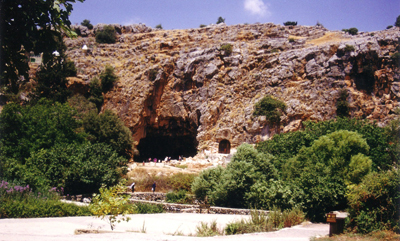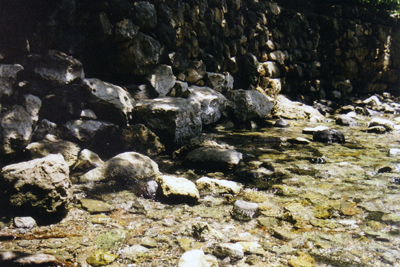
The city rebuilt as his capital by Herod Philip, situated near the source of the Jordan River in northern Galilee. In the NT, Caesarea Philippi is best known for the occasion when Jesus posed the question to the disciples, "Who do you say that I am?" and Peter declared, "You are the Christ" (Matt 16:13; Mk 8:27).
☰ Open Map
Nothing is known of the site before the Hellenistic era. The first we hear of the place was when it came under the control of the Seleucid king, Antiochus the Great, ca. 200 BC. The place was then called Panion, after the cave and spring there that were dedicated to the Greek god of nature, Pan.

Remains of temple and sancturary to Pan.
The distict was given to Herod the Great by Augustus Caesar in 20 BC. As a token of gratitude Herod built there a magnificent marble temple near the cave in honour of Augustus, calling it Paneas or Panium. It then passed to his son Philip, the tetrarch of Trachonitis, who developed the location into a city, naming it Caesarea; beginning in the 1st Cent AD, it was referred to as Caesarea Philippi to distinguish it from the other Caesarea by the sea. It became the centre of Agrippa II's reign, which he renamed Neronias, in honour of the emperor and his patron. Here Agrippa hosted Vespasian and his troops when they rested from the difficult task of putting down the First Jewish Revolt. They returned afterwards to celebrate their victory, throwing their Jewish captives to the beast in the arena.
In later Roman times the name of the place reverted to Paneas. Later Arabs call it Banias.

The spring at the foot of the grotto.

©ALBERITH
u211020lch